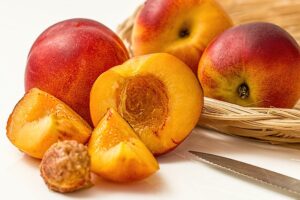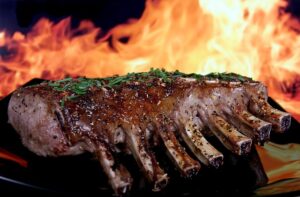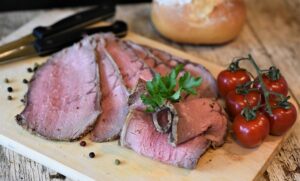Introduction
Pork loin is a popular cut of meat known for its tenderness and versatility in various culinary preparations. When it comes to the nutritional value of pork loin, one important aspect to consider is its protein content. In this article, we will explore the protein content in pork loin and its significance in a balanced diet.
Protein in Pork Loin
Pork loin is a lean cut of meat that contains a substantial amount of protein. On average, a 3-ounce (85 grams) serving of cooked pork loin provides approximately 22 grams of protein. This makes it an excellent source of high-quality protein, which is essential for various bodily functions.
Protein is a macronutrient that plays a crucial role in building and repairing tissues, producing enzymes and hormones, and supporting a healthy immune system. It is composed of amino acids, which are the building blocks of protein. Pork loin contains all nine essential amino acids that the body cannot produce on its own, making it a complete protein source.
Benefits of Protein in Pork Loin
Including pork loin in your diet can offer several benefits due to its protein content. Here are some notable advantages:
Muscle Growth and Repair: Protein is essential for muscle growth and repair. Consuming an adequate amount of protein, such as that found in pork loin, can support muscle development and recovery after exercise or physical activity.
Satiety: Protein-rich foods like pork loin can help promote feelings of fullness and reduce appetite. This can be beneficial for weight management and preventing overeating.
Metabolism: Protein has a higher thermic effect compared to fats and carbohydrates, meaning that the body burns more calories during digestion and metabolism of protein. Including pork loin in your diet can help boost your metabolism.
Nutrient Density: Pork loin not only provides protein but also contains other essential nutrients like vitamins B6 and B12, niacin, phosphorus, and selenium. These nutrients are important for overall health and well-being.
Other Considerations
While pork loin can be a valuable source of protein, it is important to consider a few factors. Firstly, the protein content may vary slightly depending on the specific cut of pork loin and the cooking method used. Additionally, the overall nutritional profile of pork loin can be influenced by factors such as the animal’s diet and farming practices.
It is also worth noting that while protein is an essential nutrient, a balanced diet should include a variety of other food groups to ensure adequate intake of all necessary nutrients. Incorporating lean proteins like pork loin into a well-rounded diet that includes fruits, vegetables, whole grains, and healthy fats is key to maintaining optimal health.
Conclusion
Pork loin is a lean and flavorful cut of meat that provides a significant amount of protein. With approximately 22 grams of protein per 3-ounce serving, it can contribute to muscle growth, satiety, metabolism, and overall nutrient density. However, it is important to remember that a balanced diet should include a variety of foods from different food groups to ensure a well-rounded nutritional intake.
References
1. USDA FoodData Central: fdc.nal.usda.gov
2. National Pork Board: www.pork.org













